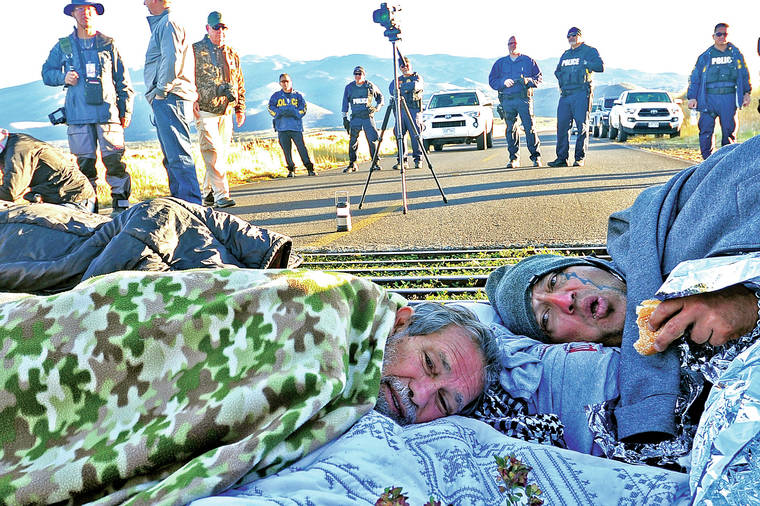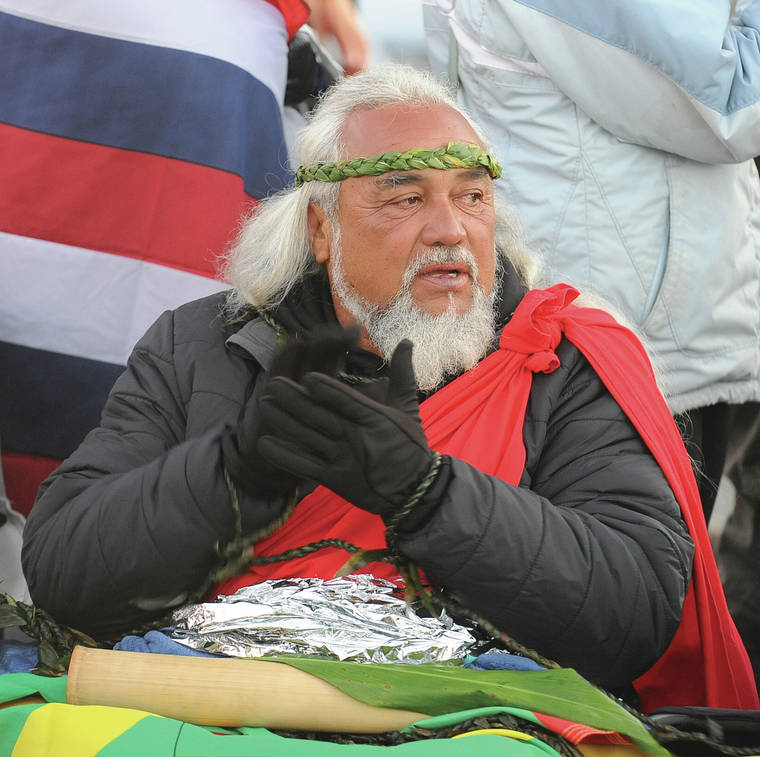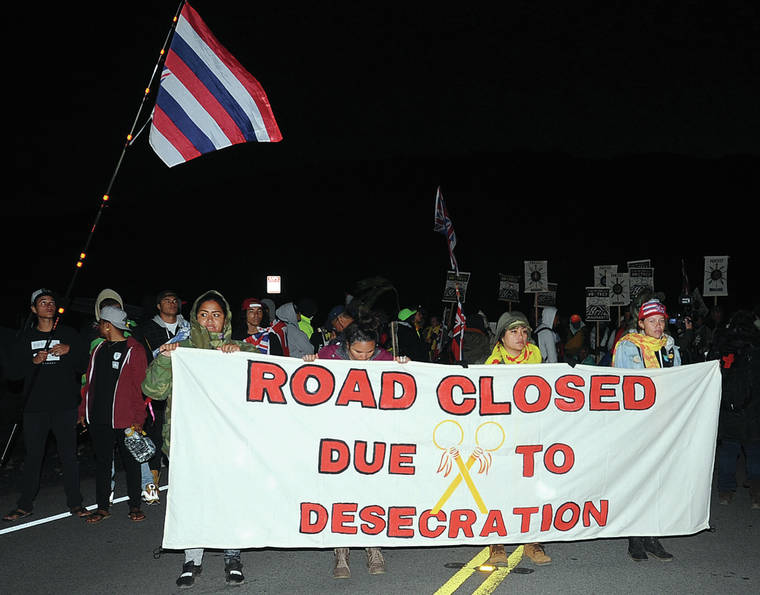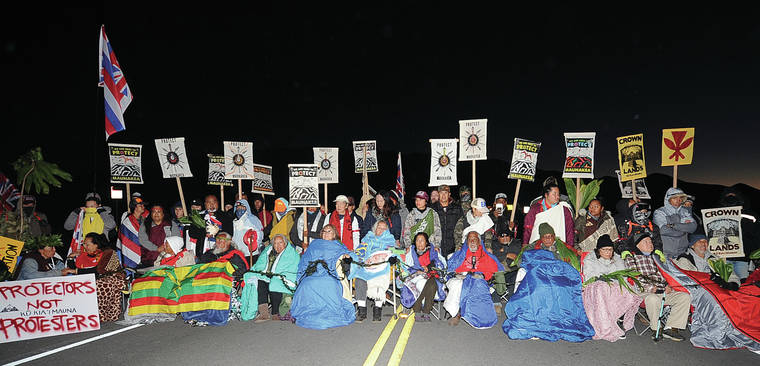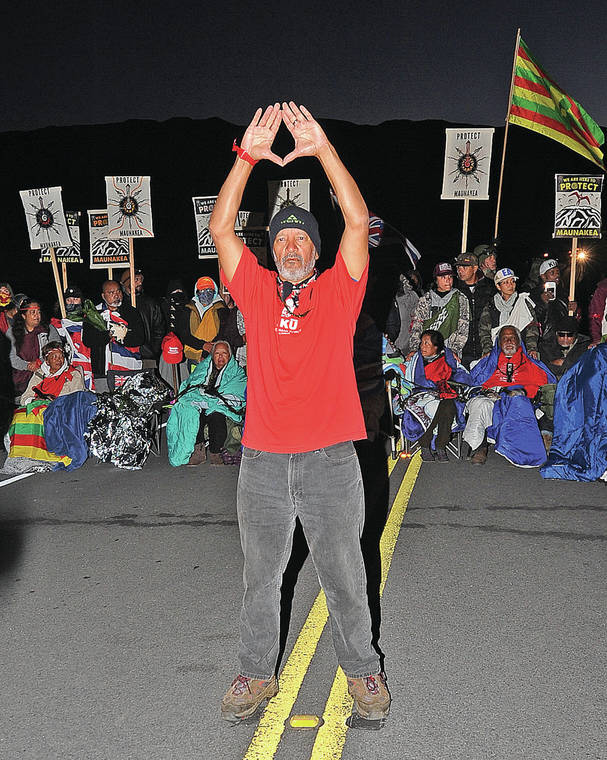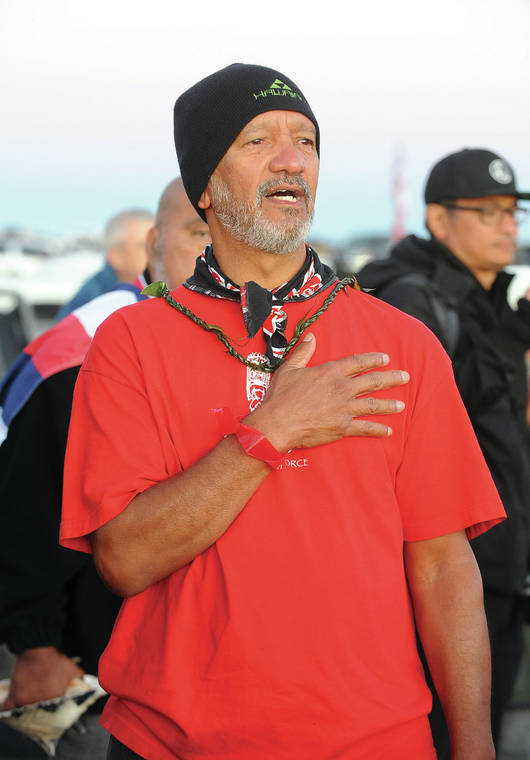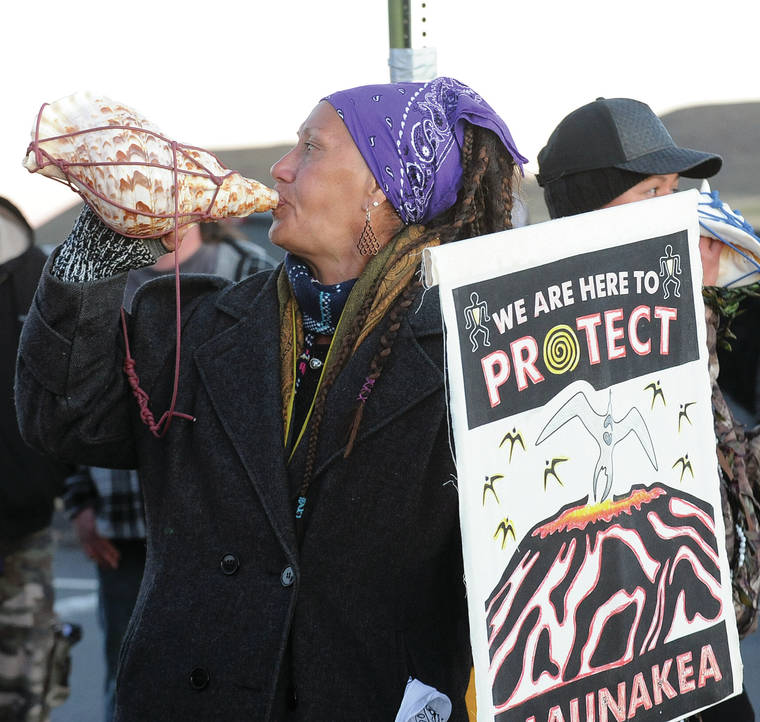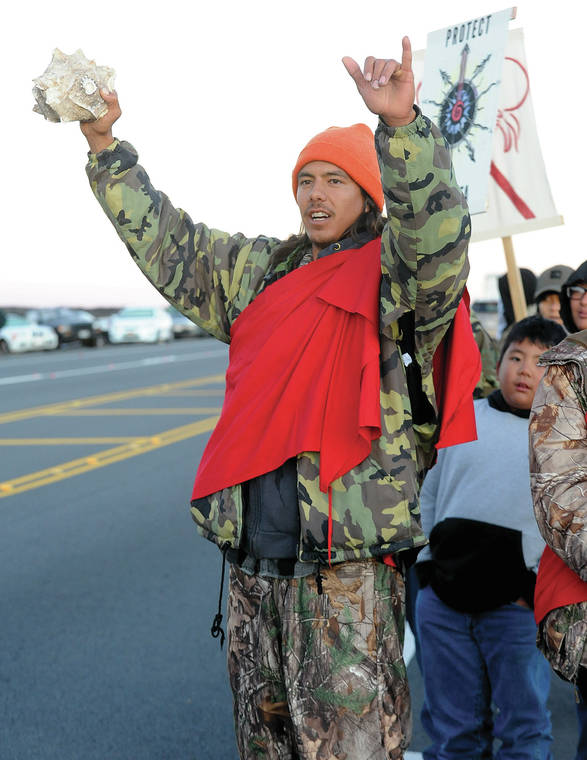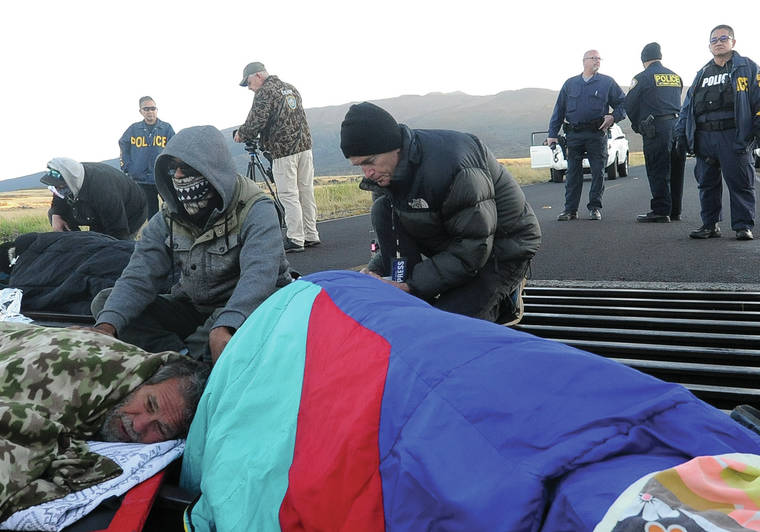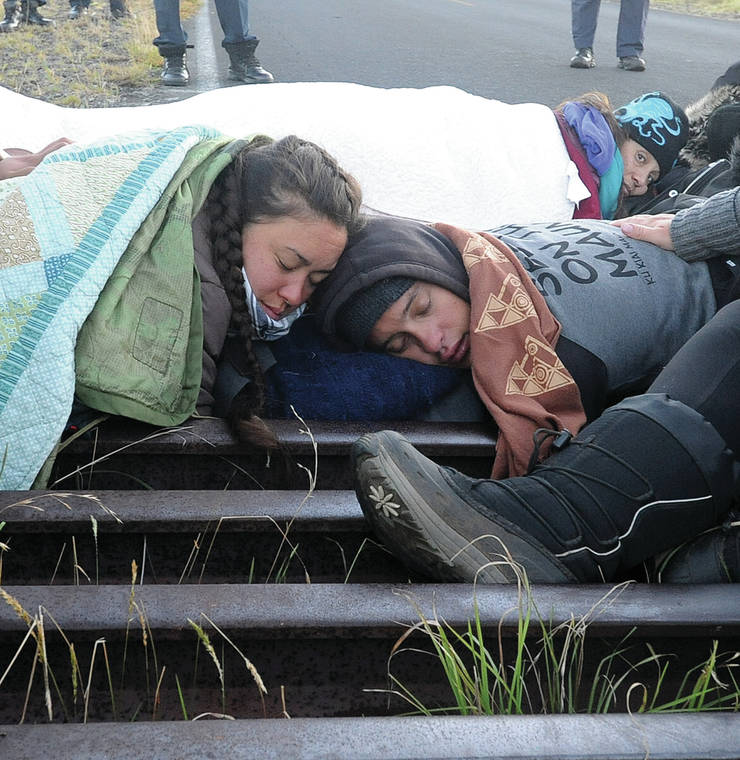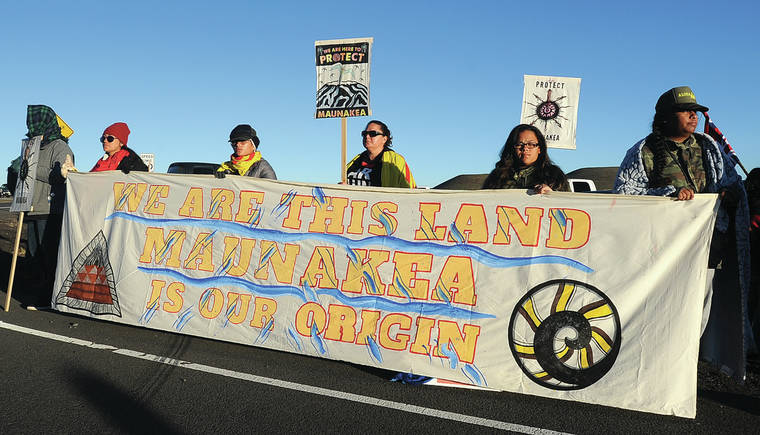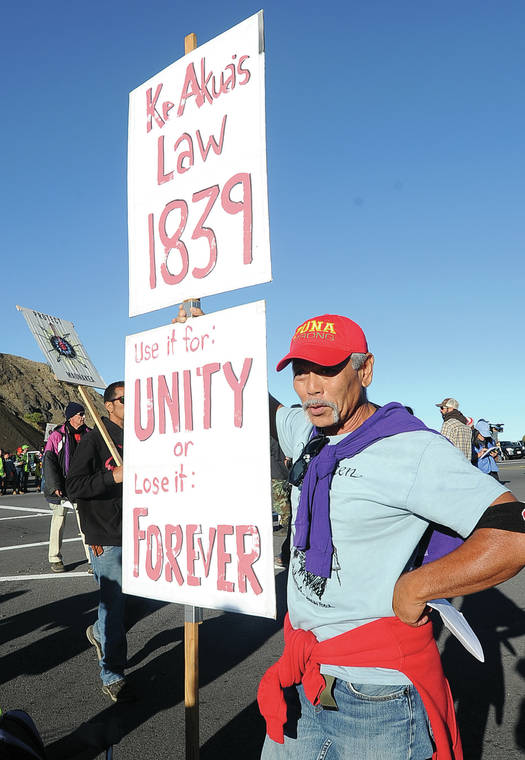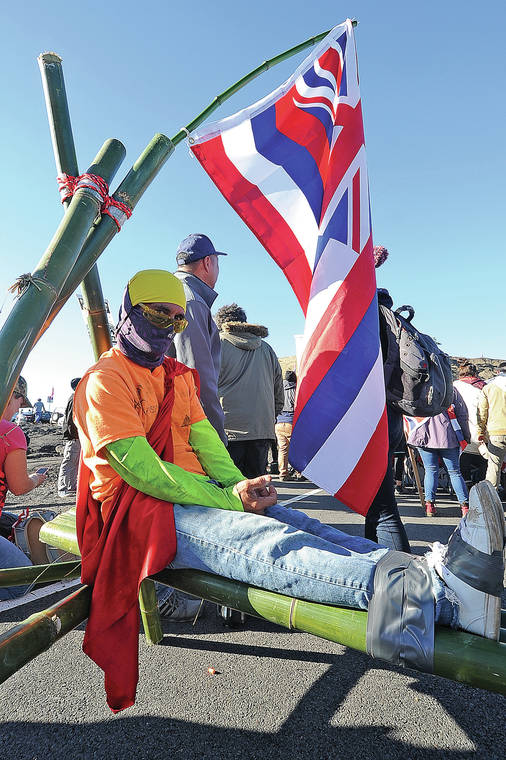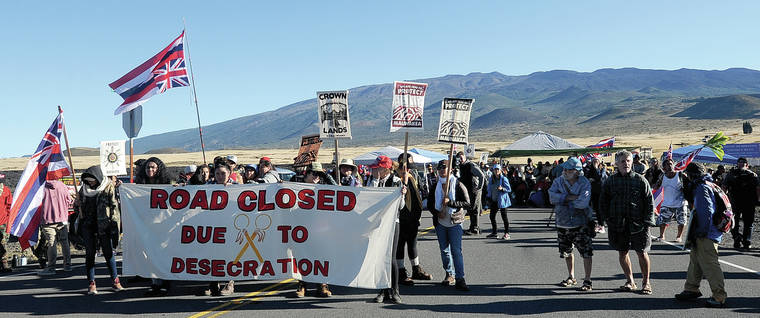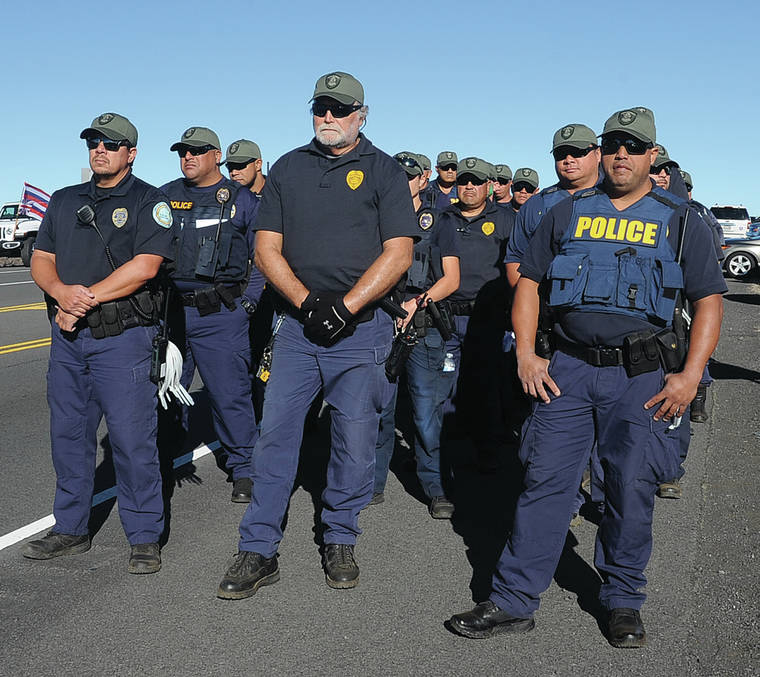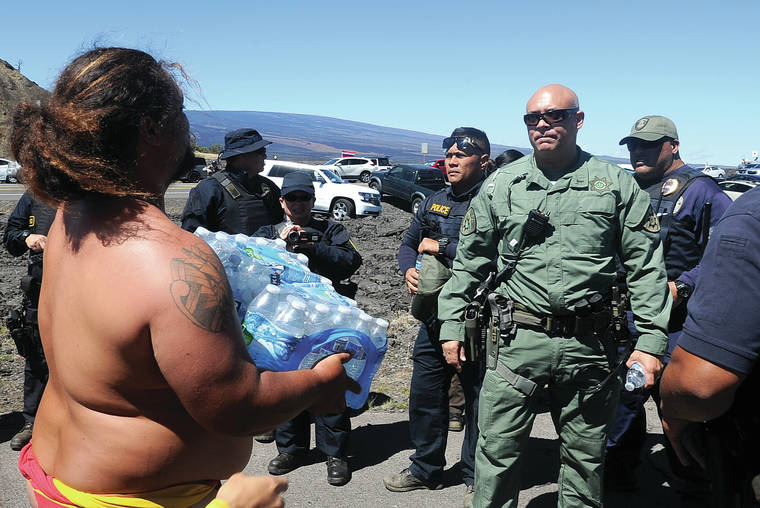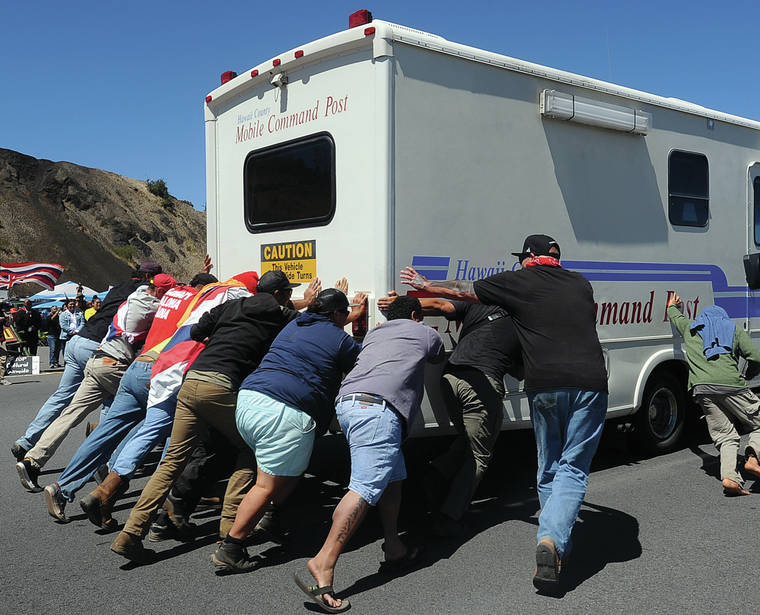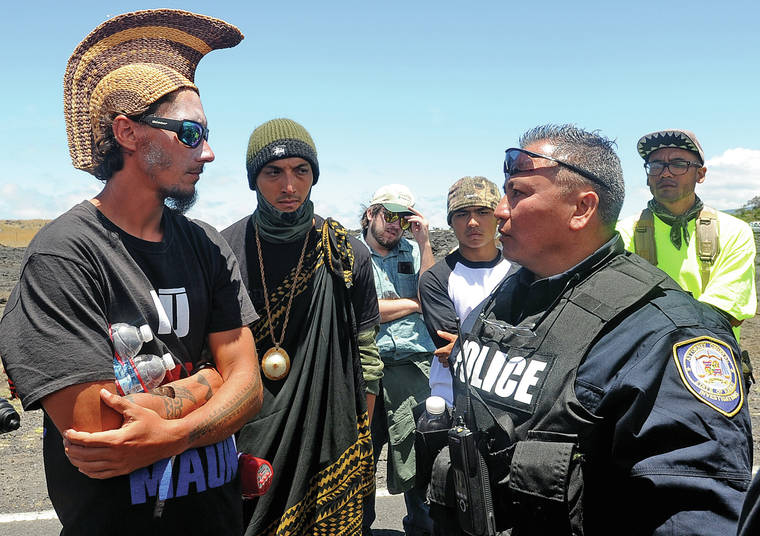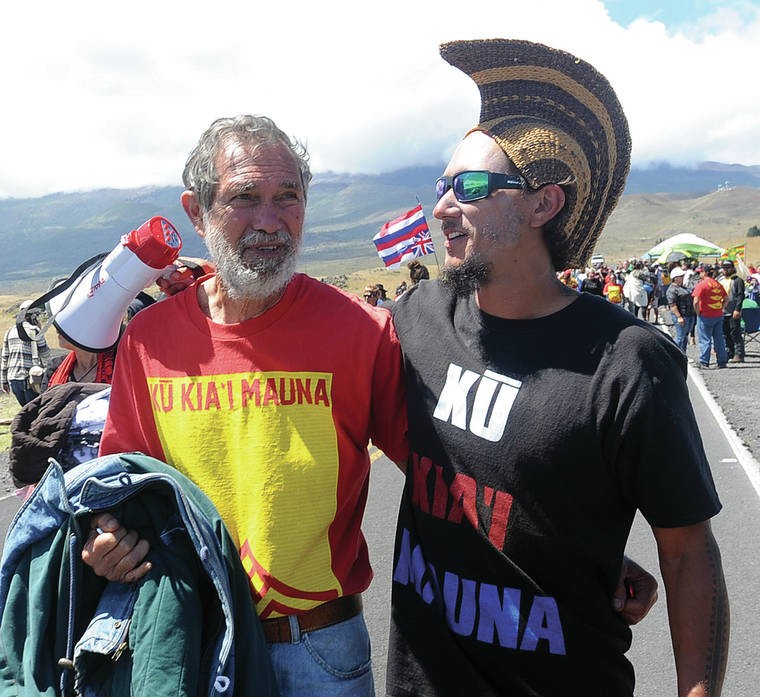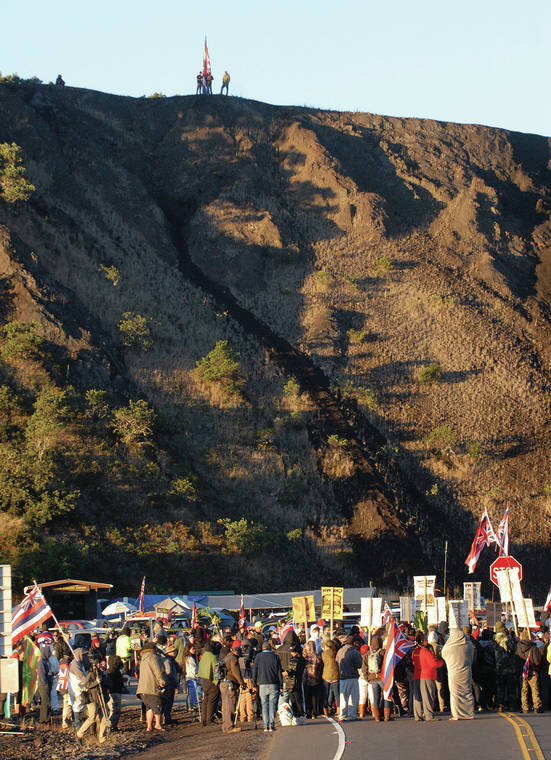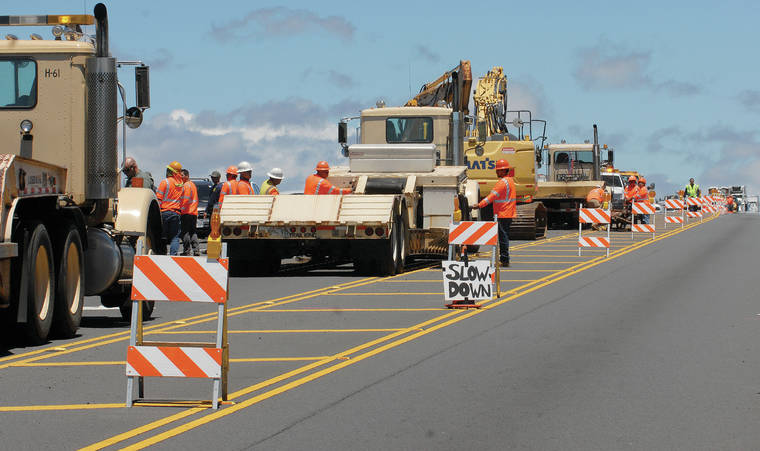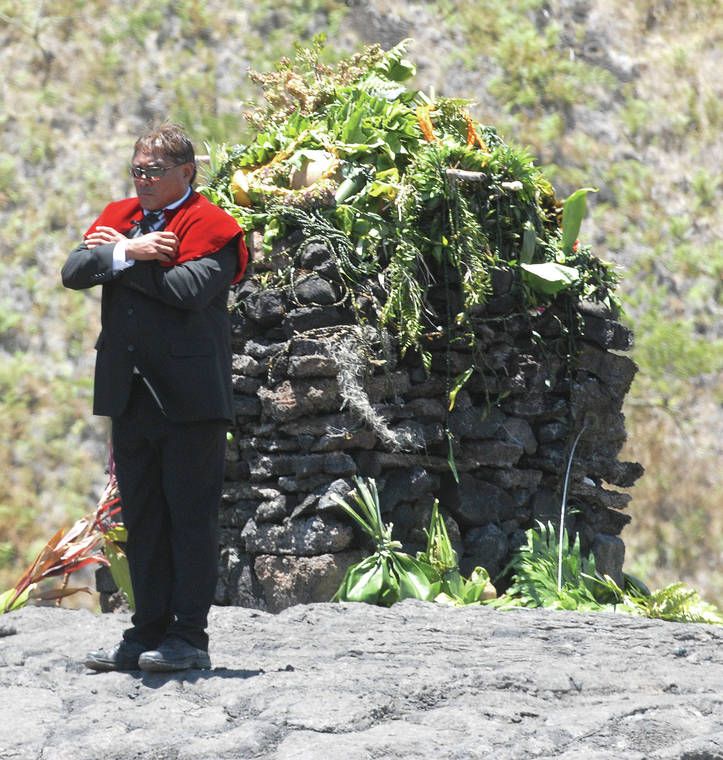MAUNAKEA — Before dawn on Monday, two lines stood on either side of Daniel K. Inouye Highway near the bottom of the Maunakea Access Road.
In a few hours, authorities were planning to close the access road in anticipation of the start of construction on the Thirty Meter Telescope, and the kia‘i, protectors, as they call themselves, who oppose the observatory’s construction on Maunakea and say they’re protecting the mauna from desecration, were preparing for the day ahead.
Some had already been in the area for a couple days now at Puu Huluhulu, where the Royal Order of Kamehameha I with the protectors had established a puuhonua, a place of refuge, where the public could peacefully demonstrate.
And with just hours until the road was scheduled to close, they stood determined along the roadside, while others walked down the lines offering cups of warm saimin to take off some the chill in the air at more than 6,600 feet.
At about 3 a.m., seven demonstrators secured themselves to a cattle guard a few hundred yards up from the bottom of the summit access road with a braid of ti spanning the full width of the roadway in front of the cattle guard.
Among those secured there was 74-year-old Walter Ritte, one of the “Kahoolawe Nine” who landed on that island in 1976, when it was still being used by the U.S. military as a bombing range. He said there’s not much difference between the fight for Kahoolawe and that for Maunakea.
“They were killing an island,” he said. “I’m up here because this is like the last stand. We don’t have enough food in the ocean anymore, the tourists have taken all of our coastlines. Poisoning all of our farmlands. Now they’re trying to take our most sacred mountains. Where the hell are we going to go after this?”
“This is the last stand,” he added. “I mean we cannot give up this mountain.”
Law enforcement came on scene in the morning, but at no point did demonstrations turn aggressive or violent. Rather, chants and calls of “Kapu Aloha” rang out as officers came to the scene.
Throughout the day, organizers repeatedly circled up with representatives from law enforcement to talk about expectations and ensure the safety of everyone in and passing through the area.
In early talks, organizers emphasized a commitment to non-violence demonstration, and as evening began to fall, law enforcement stressed there’d be no development activities during the coming nighttime hours.
But during the day, as it warmed and moved into the afternoon, others carried on the task of looking after their fellow demonstrators.
Under a canopy at Puuhonua o Puu Huluhulu, volunteers worked to keep everyone fed and hydrated by preparing fruit, sandwiches, water and warm refreshments so it could be taken to those standing firm in the space.
“It’s a lot of collaboration, a lot of generous people, so many donations,” said University of Hawaii at Manoa professor Marie Alohalani Brown.
She said they are looking for additional donations, particularly paper goods and dinnerware like small coffee cups, paper plates, forks, spoons and rolls of paper towels, as well as camping-type foods.
Because of the nature of the demonstrations, in which people stay in place for extended time periods, Brown said the kitchen workers and their runners have a critical role during the demonstrations just as much as those standing in front of the access road.
“This puuhonua right here, this is the Lahui in miniature,” she said. “It’s the same dynamics. Some people related, some people not, some people cook, some people do kia‘i. We’re all working together.”
The puuhonua’s place as one of refuge was clear Sunday night as demonstrators prepared for the day to come.
With the last of the sun falling in the west, lights came up at the canopy in the puuhonua. There, attendees gathered and connected with warm food and warmer greetings, even as the air turned cooler.
Also under the puuhonua’s canopy fulfilling its role on Monday was the Mauna Medic Healer Hui table, which assisted demonstrators by providing first aid to those who need it and walking through the area with sunscreen and ensuring everyone stayed hydrated.
“We all have our kuleana, but it really is based on family,” said Sharron Cushman, who is part of the Healer Hui. “You’re going to take care of your family.”
Cushman said they’re also looking for donations of hand warmers, blankets and gloves for those looking for an opportunity to support.
In mid-afternoon, law enforcement gave those secured to the cattle guard the opportunity to release themselves and leave without being arrested, and all did.
Kahookahi Kanuha said he was assured by the Department of Land and Natural Resources Division of Conservation and Resources Enforcement that there would be no TMT-related activities happening for the rest of the day or night.
“So we believe that the day is over, we’ve won,” he said. “It’s a small victory; it’s time for us to enjoy it and to celebrate it until dinner time, and then it’s time to get ready for tomorrow.”
But, he said, it’s not an indicator of what’s still to come.
“We can’t say we’re going to win because of this day; we can’t say we’re going to lose because of this day,” he said. “But it is a small victory. If we were playing a football game, we scored a touchdown. That doesn’t mean that we can’t lose, but it’s a pretty good start, and we’re happy with it.”
























